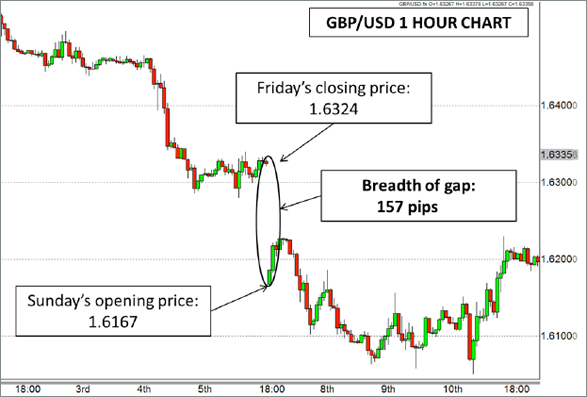BRIEF INTRODUCTION OF THE COURSE
What is Cryptocurrency?
A cryptocurrency is a digital or virtual currency that is secured by cryptography, which makes it nearly
impossible to counterfeit or double-spend. Many cryptocurrencies are decentralized networks based on
blockchain technology: a distributed ledger enforced by a disparate network of computers. A defining feature
of cryptocurrencies is that they are generally not issued by any central authority, rendering them
theoretically immune to government interference or manipulation.
What is Crypto Trading?
Crypto trading is simply the exchange of cryptocurrencies. This is one way of getting involved in the world
of cryptocurrencies without having to mine it. It’s a highly profitable market that you can make lots of
money from and we help you get started.

What is Crypto Mining?
cryptomining is a process in which transactions for various forms of cryptocurrency are verified and added
to the blockchain digital ledger. Each time a cryptocurrency transaction is made, a cryptocurrency miner is
responsible for ensuring the authenticity of information and updating the blockchain with the transaction.
The crypto miner is rewarded with some cryptocurrency.
Bond investments
How Bonds Work The borrowing organization promises to pay the bond back at an agreed-upon date. Until then,
the borrower makes agreed-upon interest payments to the bondholder. People who own bonds are also called
creditors or debtholders. In the old days, when people kept paper bonds, they would redeem the interest
payments by clipping coupons. Today, this is all done electronically.
Stock investments

The primary benefits of investing in the stock market is the chance to grow your money. Over time, the stock
market tends to rise in value, though the prices of individual stocks rise and fall daily. Investments in
stable companies that are able to grow tend to make profits for investors. Likewise, investing in many
different stocks will help build your wealth by leveraging growth in different sectors of the economy,
resulting in a profit even if some of your individual stocks lose value.
Annuities
An annuity is a financial product that pays out a fixed stream of payments to an individual. These financial
products are primarily used as an income stream for retirees. Annuities are created and sold by financial
institutions, which accept and invest funds from individuals. Upon annuitization, the holding institution
will issue a stream of payments at a later point in time.
Real estate

Real estate investing involves the purchase, ownership, management, rental and/or sale of real estate for
profit. Improvement of realty property as part of a real estate investment strategy is generally considered
to be a sub-specialty of real estate investing called real estate development. Real estate is an asset form
with limited liquidity relative to other investments, it is also capital intensive (although capital may be
gained through mortgage leverage) and is highly cash flow dependent. If these factors are not well
understood and managed by the investor, real estate becomes a risky investment.
IRA
An individual retirement account (IRA) is a tax-advantaged investing tool that individuals use to earmark
funds for retirement savings.So how does an IRA work? IRAs are sometimes referred to as individual
retirement arrangements, because investments held in IRAs can encompass a range of financial products,
including stocks, bonds, ETFs, and mutual funds. A self-directed IRA is a type of traditional or Roth IRA
that allows investors to make all of the investment decisions for their account and affords access to an
even broader range of investments, including real estate, private placements, and tax liens.
What is Forex?
The foreign exchange market – also known as forex or the FX market – is the world’s most traded market, with
turnover of $5.1 trillion per day.*
To put this into perspective, the HK stock market trades around $257 billion a day; quite a large sum, but
only a fraction of what forex trades.
Forex is traded 24 hours a day, 5 days a week across by banks, institutions and individual traders
worldwide. Unlike other financial markets, there is no centralized marketplace for forex, currencies trade
over the counter in whatever market is open at that time.
How FX Trading works
Trading forex involves the buying of one currency and simultaneous selling of another. In forex, traders
attempt to profit by buying and selling currencies by actively speculating on the direction currencies are
likely to take in the future.
World’s Major Currencies
| COUNTRY |
SYMBOL |
COUNTRY |
SYMBOL |
| United States |
USD |
Switzerland |
CHF |
| Eurozone |
EUR |
Canada |
CAD |
| Japan |
JPY |
Australia |
CAD |
| Great Britain |
GBP |
New Zealand |
NZD |
Want to know more about how to trade forex?
Our free Let’s Get to Know Forex guide will cover how to get started, help you make your first trades and
outline how to create a long-term trading plan for long-term success.
Which currencies can I trade?
Forex is the most widely traded market in the world, with more than $5.3 trillion* being bought and sold
every single day. Traders will speculate on the future direction of currencies by taking either a long or
short position, depending on whether you think the currency’s value will go up or down.
Typically referred to as “The Majors”, these seven currency pairs make up almost 80% of total daily trading
volume*. As you’ll see in the table below, the major currency pairs all include the USA Dollar (USD).
Major Currency Pairs
| DESCRIPTION |
SYMBOL |
NICKNAME |
| Euro/USA Dollar |
EUR/USD |
Euro |
| Great British Pound/US Dollar |
GBP/USD |
CABLE |
| USA Dollar/Japanese Yen |
USD/JPY |
YEN |
| USA Dollar/Swiss Franc |
USD/CHF |
SWISSY |
| USA Dollar/Canadian Dollar |
USD/CAD |
LOONIE |
| Australian Dollar/USA Dollar |
AUD/USD |
AUSSIE |
| New Zealand Dollar/USA Dollar |
NZD/USD |
KIWI |
Minor Currency Pairs
While the major currency pairs make up the majority of the market, you shouldn’t ignore the minors – also
referred to as Cross Currency Pairs. The minor currency pairs account for all the other combination of major
markets such as; EUR/GBP, EUR/CHF and GBP/JPY.
With so many options available, you’re probably asking yourself – which currencies should I trade? A good
rule of thumb for traders new to the market is to focus on one or two currency pairs.
Generally, traders will choose to trade the EUR/USD or USD/JPY because there is so much information and
resources available about the underlying economies. Not surprisingly, these two pairs make up much of global
daily volume.

Risk Management
- Determine Your Risk Tolerance
This is a personal choice for anyone who plans on trading any market. Most trading instructors will
throw out numbers like 1%, 2% or on up to 5% of the total value of your account risked on each trade
placed, but a lot of your comfort with these numbers is largely based on your experience level.
Newer traders are inherently less sure of themselves due to their lack of knowledge and familiarity
with trading overall or with a new system, so it makes sense to utilize the smaller percentage risk
levels.
Once you become more comfortable with the system you are using, you may feel the urge to increase
your percentage, but be cautious not to go too high. Sometimes trading methodologies can produce a
string of losses, but the goal of trading is to either realize a return or maintain enough to make
the next trade.
For instance, if you have a trading method that places one trade per day on average and you are
risking 10% of your beginning monthly balance on each trade, it would only theoretically take 10
straight losing trades to completely drain your account. So even if you are an experienced trader,
it doesn’t make much sense to risk so much on one single trade.
On the other hand, if you were to risk 2% on each trade that you place, you would theoretically have
to lose 50 consecutive trades to drain your account. Which do you think is more likely: losing 10
straight trades, or losing 50?
| STARTING BALANCE |
% RISKED ON EACH TRADE |
$ RISKED ON EACH TRADE |
# OF CONSECUTIVE LOSSES BEFORE $0 |
| $10,000 |
10% |
$1000 |
10 |
| $10,000 |
5% |
$500 |
20 |
| $10,000 |
3% |
$300 |
33 |
| $10,000 |
2% |
$200 |
50 |
| $10,000 |
1% |
$100 |
100 |
- Customize Your Contracts
The amounts of methodologies to use in trading are virtually endless. Some methods have you use a
very specific stop loss and profit target on each trade you place while others vary greatly on the
subject. For instance, if you use a strategy that calls for a 20-pip stop loss on each trade and you
only trade the EUR/USD, it would be easy to figure out how many contracts you may want to enter to
achieve your desired result. However, for those strategies that vary on the size of stops or even
the instrument traded, figuring out the amount of contracts to enter can get a little tricky.
One of the easiest ways to make sure you are getting as close to the amount of money that you want
to risk on each trade is to customize your position sizes. A standard lot in a currency trade is
100,000 units of currency, which represents $10/pip on the EUR/USD if you have the USA dollar (USD)
as your base currency; a mini lot is 10,000.

If you wanted to risk $15 per pip on a EUR/USD trade, it would be impossible to do so with standard
lots and could force you in to risking either too much or too little on the trade you place, whereas
both mini and micro lots could get you to the desired amount. The same could be said about wanting
to risk $12.50 per pip on a trade; both standard and mini lots fail to achieve the desired result,
whereas micro lots could help you achieve it.
In the realm of trading, having the flexibility to risk what you want, when you want, could be a
determining factor to your success.
- Determine Your Timing
There may not be anything more frustrating in trading than missing a potentially successful trade
simply because you weren’t available when the opportunity arose. With forex being a 24-hour-a-day
market, that problem presents itself quite often, particularly if you trade smaller timeframe
charts. The most logical solution to that problem would be to create or buy an automated trading
robot, but that option isn’t viable for a large segment of traders who are either skeptical of the
technology/source or don’t want to relinquish the controls. That means that you have to be available
to place trades when the opportunities arise, in person, and of full mind and body. Waking up at 3am
to place a trade usually doesn’t qualify unless you’re used to getting only 2-3 hours of sleep.
Therefore, the average person who has a job, kids, soccer practice, a social life, and a lawn that
needs to be mowed needs to be a little more thoughtful about the time they want to commit. Perhaps
4-Hour, 8-Hour, or Daily charts are more amenable to that lifestyle where time may be the most
valuable component to trading happiness.
When the market price moves in a favorable direction (up for long positions, down for short
positions), the trigger price follows the market price by the specified stop distance. If the market
price moves in an unfavorable direction, the trigger price stays stationary and the distance between
this price and the market price becomes smaller. If the market price continues to move in an
unfavorable direction until it reaches the trigger price, an order is triggered to close the trade.
- Avoid Weekend Gaps
Many market participants are knowledgeable of the fact that most popular markets close their doors on
Friday afternoon Eastern Time in the US. Investors pack up their things for the weekend, and charts
around the world freeze as if prices remain at that level until the next time they are able to be
traded. However, that frozen position is a fallacy; it isn’t real. Prices are still moving to and
fro based on the happenings of that particular weekend, and can move drastically from where they
were on Friday until the time they are visible again after the weekend.
This can create “gaps” in the market that can actually run beyond your intended stop loss or profit
target. For the latter, it would be a good thing, for the former – not so much. There is a
possibility you could take a larger loss than you intended because a stop loss is executed at the
best available price after the stop is triggered; which could be much worse than you planned.
While gaps aren’t necessarily common, they do occur, and can catch you off guard. As in the
illustration below, the gaps can be extremely large and could jump right over a stop if it was
placed somewhere within that gap. To avoid them, simply exit your trade before the weekend hits, and
perhaps even look to exploit them by using a gap-trading technique.

- Watch the News
News events can be particularly perilous for traders who are looking to manage their risk as well.
Certain news events like employment, central bank decisions, or inflation reports can create
abnormally large moves in the market that can create gaps like a weekend gap, but much more sudden.
Just as gaps over the weekend can jump over stops or targets, the same could happen in the few
seconds after a major news event. So unless you are specifically looking to take that strategic risk
by placing a trade previous to the news event, trading after those volatile events is often a more
risk-conscious decision.
- Make It Affordable
There is a specific doctrine in trading that is extolled by responsible trading entities, and that
is that you should never invest more than you can afford to lose. The reason that is such a
widespread manifesto is that it makes sense. Trading is risky and difficult, and putting your own
livelihood at risk on the machinations of market dynamics that are varied and difficult to predict
is tantamount to putting all of your savings on either red or black at the roulette table of your
favorite Vegas casino. So don’t gamble away your hard-earned trading account: invest it in a way
that is intelligent and consistent.
So will you be a successful trader if you follow all six of these tenants for managing risk? Of
course not, other factors need to be considered to help you achieve your goals. However, taking a
proactive role in managing your risk can increase your likelihood for long term success.







